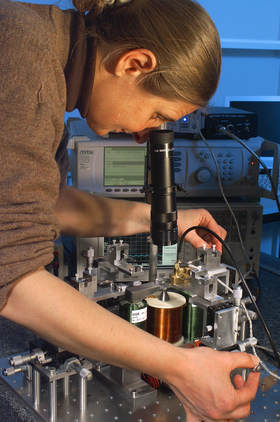IST Distinguished Lecture
Spin electronics: From basic concepts to applications towards a greener electronics
Bernard Dieny
SPINTEC, Univ.Grenoble Alpes / CEA / CNRS
|
Summary
Spin-electronics (or spintronics) is a merging of magnetism and electronics. It aims at using the spin of the electrons in addition to their charge to reveal new phenomena and use them to conceive devices exhibiting new functionalities or improved performances. In spintronic devices, magnetic materials are used as polarizers and analyzers for the spin of the electrons. Spin electronics was born is 1988 with the discovery of giant magnetoresistance (GMR) in magnetic multilayers. The physics Nobel Prize was awarded to Prof. A.Fert and Prof. P.Grunberg in 2007 for this discovery. In less than 10 years, GMR found an important application as read heads in computer hard disk drives. Since then, spintronics development has been paved by a number of breakthrough discoveries: tunnel magnetoresistance, spin transfer torque, spin orbit torque etc. These discoveries have all opened important perspectives of applications especially for low power electronics and multifunctional integration combining memory, logic, sensing and communication functions. In particular, a new type of magnetic non-volatile memory called MRAM (Magnetic Random Access memory) is entering in industrial production. Thanks to their ability to keep the written information while not being power supplied (non-volatility), MRAMs allow to conceive a “Normally-Off/Instant-On” electronics which has much reduced power consumption than conventional “Normally-On” electronics. This new technology is very promising for all wearable applications, Internet of Things, server farms, high performance computing as well as for artificial intelligence, thus opening a route towards a greener electronics. |
|
The Speaker
Doctor B.DIENY has been conducting research in magnetism and spin electronics for 35 years. He played a key role in the pioneer work on giant magnetoresistance spin-valves which were introduced in hard disk drives in 1998. In 2001, he launched SPINTEC laboratory (Spintronics and Technology of components) in Grenoble. He cofounded two startup companies: Crocus Technology on MRAM and magnetic sensors in 2006 and EVADERIS on circuits design in 2014. He received two Advanced Research grants from the European Research Council in 2009 and 2014 related to hybrid CMOS/Magnetic Integrated Electronics. He was nominated IEEE Fellow in 2010 and received the De Magny Prize from French Academy of Sciences in 2015. His field of expertise covers a broad spectrum from basic research in nanomagnetism and spin-electronics to functional spintronic devices. |




